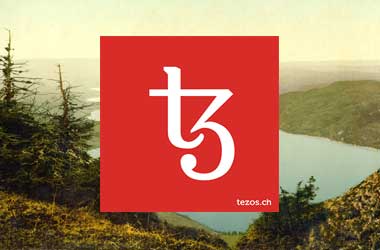 So many projects have gone live this summer. Some of the popular ones are Tron (TRX), VeChainThor (VEN/VET), and SONM (SNM). Tezos (XTZ), a blockchain platform which raised $232 million through ICO in 2017, is the latest project to go live yesterday. The Tezos Foundation announced that the betanet is live, according to a company’s blog post.
So many projects have gone live this summer. Some of the popular ones are Tron (TRX), VeChainThor (VEN/VET), and SONM (SNM). Tezos (XTZ), a blockchain platform which raised $232 million through ICO in 2017, is the latest project to go live yesterday. The Tezos Foundation announced that the betanet is live, according to a company’s blog post.
The platform uses an on-chain governance model standard verification for smart contracts. The model allows Tezos (XTZ) users to propose protocol upgrades. Changes are automatically implemented upon reaching consensus, without a need for any manual intervention. The Tezos community member who proposed the change is compensated with XTZ tokens.
The system has been adopted with the hope that the mechanism would incentivize all community members to work on improving the network and assist in decentralizing the project to the maximum extent.
Tezos Foundation, through an email, stated that although they had thought of holding on to veto power for a year, mainly for proposals related to network, they have refrained from doing so.
Ryan Jesperson, president of the Tezos Foundation
“Adopting amendments to the protocol is a central element of Tezos and no single entity should have the power to alter decisions agreed upon by community members. The option of a temporary veto had been considered solely as a security measure, but the Foundation is committed to decentralization from day one. We think that this decision reflects that priority.”
The Tezos Protocol employs a Delegated Proof-of-Stake (DPoS) consensus algorithm. The Foundation refers to its block validators as “bakers”. Tezos users can opt for the block validation process by staking 10,000 tezzies (ꜩ). The Tezos Foundation will be the sole staker for the first three weeks. However, it won’t be rewarded with any block rewards during that period.
Tezos encourages users to delegate their stake to a baking service, in case they do not own 10,000ꜩ. The users can make active contribution to the network in this manner. XTZ, the native token of the Tezos system is based on an inflationary supply model. The number of tokens will increase at a rate of 5.5% and it will be paid out to bakers.
The alpha documentation indicates that users can stake if they are willing to pay a security deposit at 512 XTZ per block created, in addition to 64 XTZ per endorsement. The security deposit is waived if two endorsements are made, making it look like a simpler version of Ethereum’s Casper.
Tezos stakers are rewarded 80 tez per block. The block identification time is one minute. Precisely, the block reward is 16 and the endorser block reward is 2. For every block, there will be 32 endorsers. This results in the creation of 80 new Tezos per block, representing an annual inflation rate of 5.5%.
The network capacity seems to be limited to 5MB per 10 minutes. As mentioned earlier, the Tezos protocol can handle smart contracts. So, with the exception of in-built governance, the Tezos network remains more or less the same as other blockchains.
Through a grant, the Tezos Foundation has tied up with a New York based company named Cryptonomic to build an open source wallet. This is in addition to other open source wallet projects which are currently being worked out.

 United States
United States United Kingdom
United Kingdom















